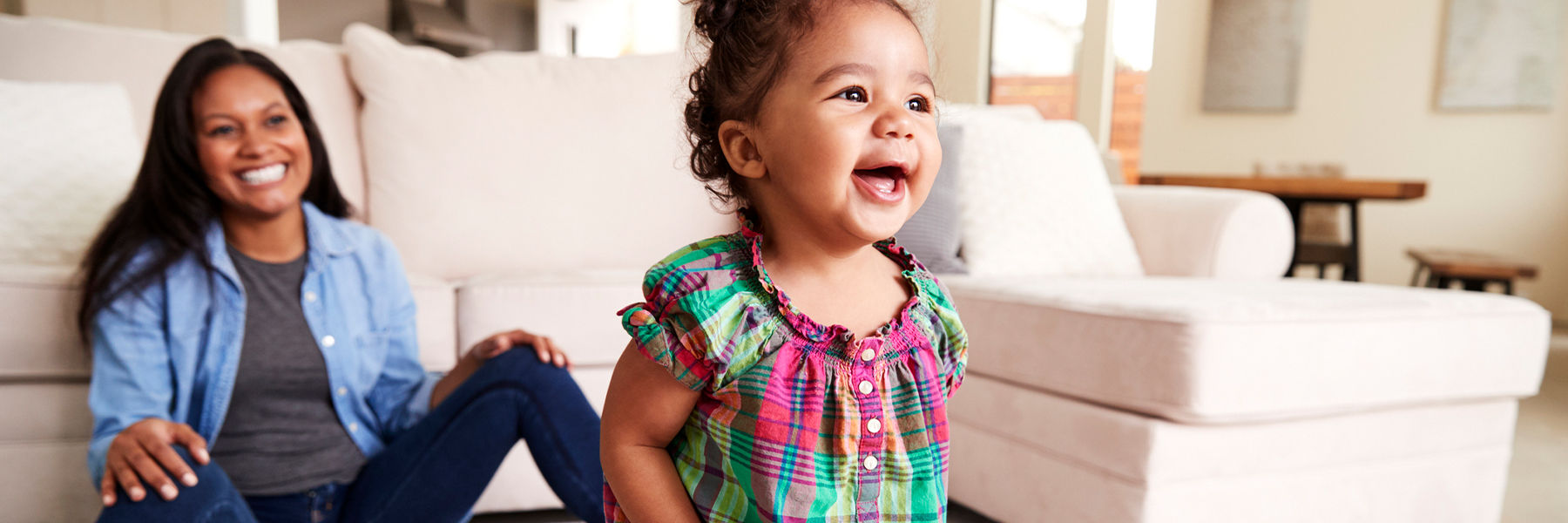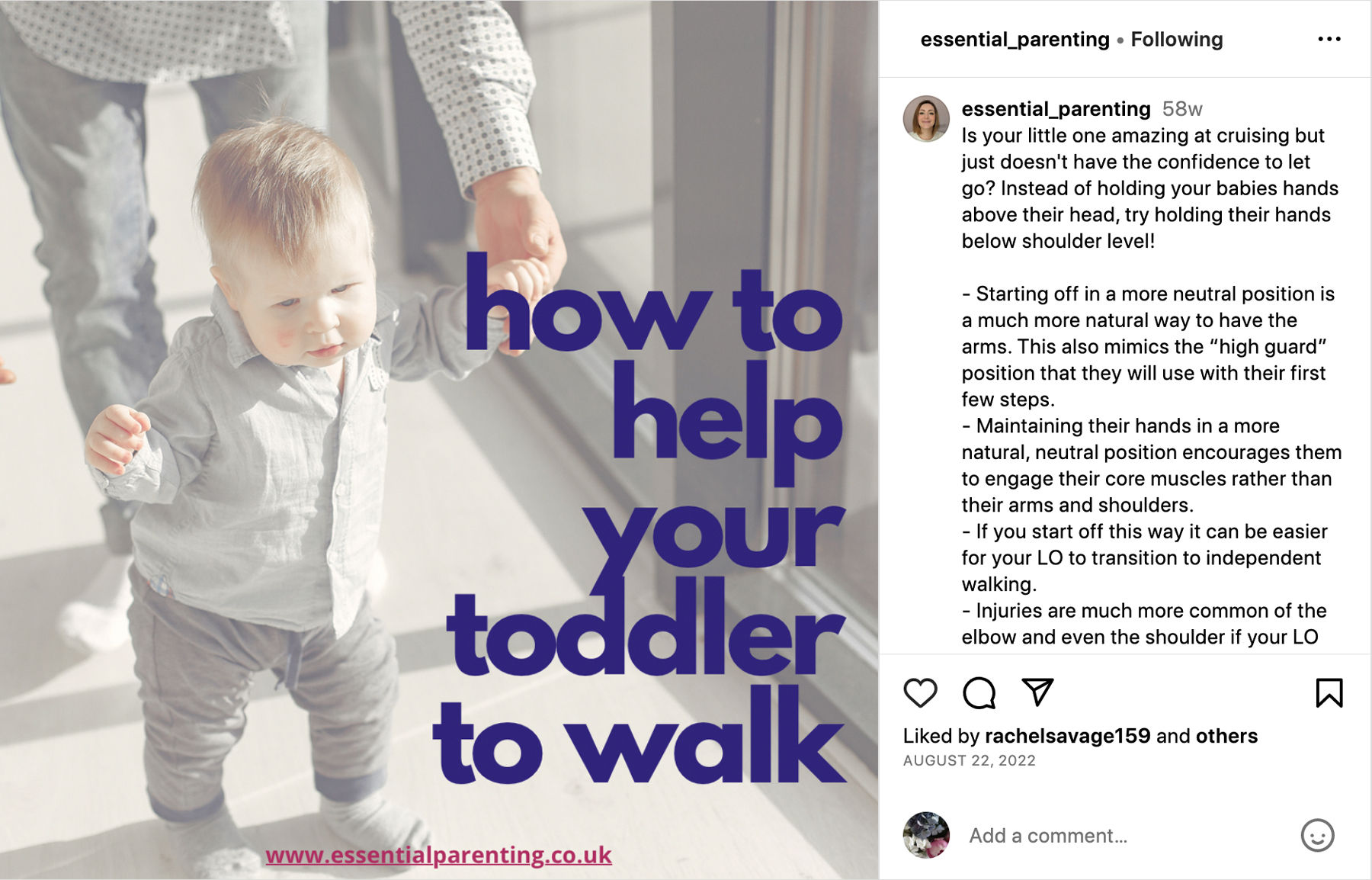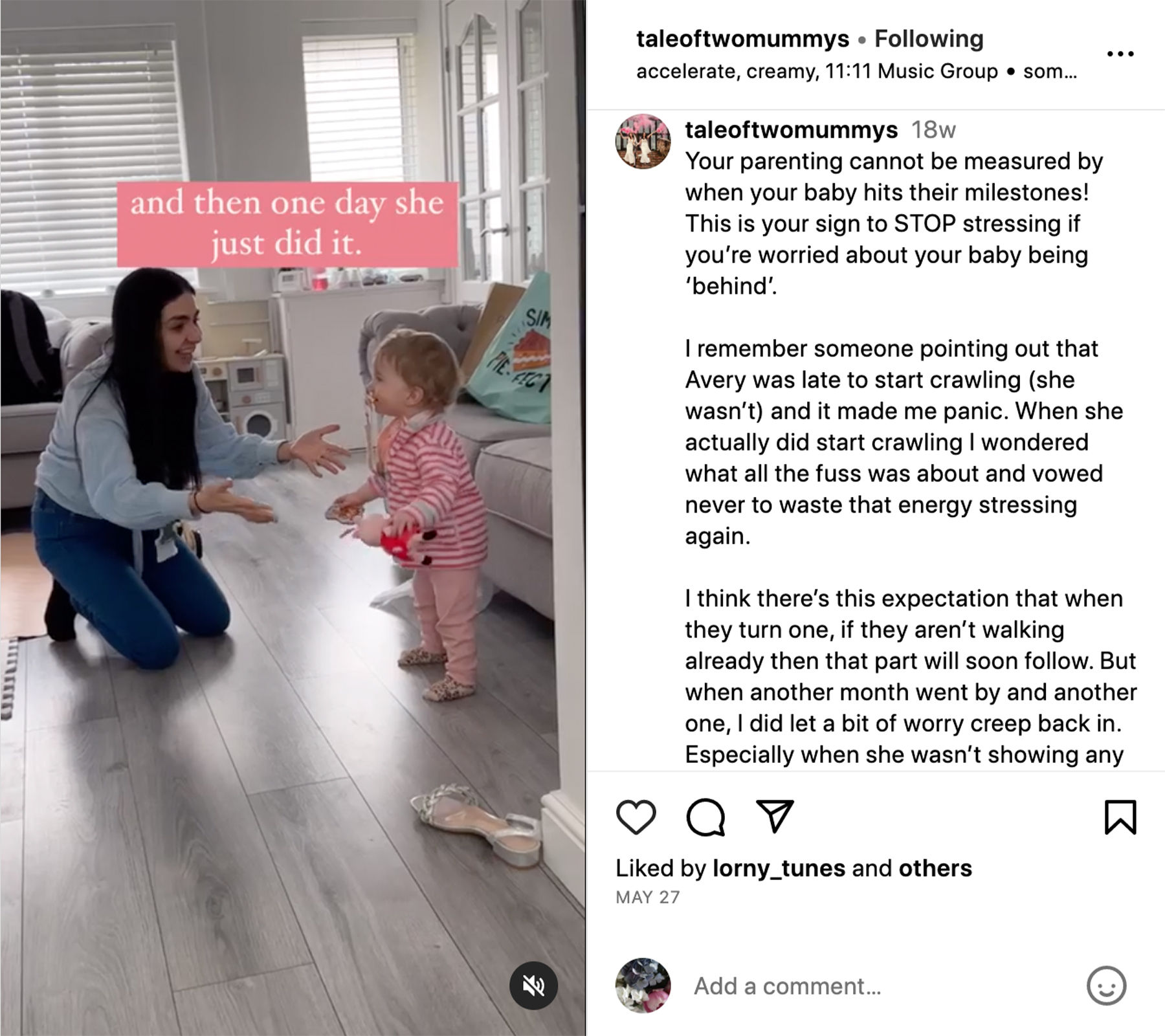Use arrow keys to navigate through the menu items. Use Tab key to navigate through the menu banners.
Walking

Walking
Find out when your baby will reach this magical milestone – and what you can do to help
Like their first words, your child’s first adorable steps make for one of their most memorable moments. Learning to walk officially makes your baby a toddler and is a sure sign of their growing independence.
It can also be the milestone that causes most anxiety. But Essential Parenting’s Helen Davies, a paediatric nurse and specialist health visitor, assures worried parents that children are all very different when it comes to walking.
Here’s what to expect in the run up to those first unsteady steps, how to be the best cheerleader for your child and what to do if you’re at all worried.

When do babies start walking?
All milestones happen at different times for different babies and walking is no exception. In fact, there’s a wider age range when it comes to first steps than any other first.
Helen, who is also a mum-of-4 says: ‘Babies are all unique and will walk when they’re ready, which usually happens any time between 9 and 18 months. Most children will walk for the first time between 12 and 17 months.’
How does my baby learn to walk?
Walking might feel like it suddenly happens, but your baby will have been in serious training for months! After mastering sitting up by themselves, they go through a series of developmental stages. These give them the muscle strength, balance and co-ordination ready for the big day when they can show off that jaunty gait.
Crawling or shuffling
Whether bum-shuffler, classic crawler or both, your baby needs to practise moving while close to the floor before they can stand and walk. Crawling and shuffling along on their bum tend to happen at around 7 to 10 months.
Pulling up
No piece of furniture is safe once your tot works out they can use it to lever themselves up and get a pint-sized view of the world!
Pulling up happens anywhere between 9 months to a year. Your baby may keep falling back down at first, only to try again. But these baby squats all build vital leg strength.
Cruising
As your little adventurer gets more confident with pulling themselves up onto furniture, they’ll start to cruise around it. They’ll hold on with their hands while making like a crab and sidestepping around. Most babies will cruise between 9 and 16 months.
Standing and walking with help
Between around 9 and 12 months your tiny explorer will stand on their own for a precious few seconds. If you take their hands to keep them steady, they may take their first supported steps.
From then it’s only a matter of time before they take a leap of faith into toddling on their own.
What should I do if I’m worried about my child’s progress?
If you child isn’t meeting these milestones, or not walking by 18 months, make an appointment with your GP practice. It’s most likely that your baby just needs a bit more time. But your doctor or health visitor can check to be sure.
‘Walking can depend on so many different factors, including when you and your partner started to walk,’ says Helen.
‘More importantly, walking later doesn’t mean your baby is 'behind' or have any bearing on their physical ability or intelligence. They may just be more laid-back about the whole thing!’
How to encourage walking
Your baby was born with the drive to get around, so walking isn’t something you have to teach. Having said that, there are lots of ways to support your baby and boost their confidence.
Give your tot safe space to practise
Helen says: ‘Confidence and practice are key when it comes to learning to walk. So give your child lots of safe opportunities to work on their skills and realise what they’re capable of.’
Make your home safe for your little explorer and keep floors clear for smooth manoeuvres. You could set up a trail of sturdy, secure furniture for your little one to cruise around. And keep things fun! Happy times with you makes your baby feel more confident.
Shower them with praise
Praise even the smallest wins along the way – that first TikTok-worthy attempt at cruising or wobbly pull-up – and continue praising their efforts. When they fall be ready with a cuddle, but don’t overdo it. This might give them a cue to get more upset.
Be patient with your child
Don’t try to push your baby’s progress when they’re not ready. This will only put them off. And don’t give yourself stress either if your friends’ babies are ahead of yours.
Rachael Jackson, one half of Tale of Two Mummies, says she let worry creep in before her daughter Avery walked at 17 months. She says people’s comments, as well as social media stories of other children’s achievements, feeds into milestone anxiety.
‘Avoid social media for a bit if need be. And ignore other people who make unhelpful comments about your child’s walking, talking or anything else. This is your child’s journey – enjoy it!’

Practise stage-by-stage
Don’t go straight in encouraging your 6-month-old to lurch over to you. Instead help them with all the mini stages first. This will build that all-important confidence plus their muscle strength and balance.
You can help them practise standing from around six months. Kneel down and hold your baby as you stand them upright on your thighs. They’ll probably bounce up and down which is not only great fun but will help strengthen those little quads and hamstrings!
Encourage pulling up by putting a favourite toy on the sofa just out of reach. Try a similar thing when they’re starting to cruise by putting a toy on a safe furniture trail.
Hold your baby’s hands while facing them to support and guide them towards you. Or stand behind holding their hands and walk forward with them. Helen says: ‘Just keep their hands below their shoulder level and in a neutral position to mimic how they’d walk anyway.’
Once they’re walking with your help, you could get a push toy that’s sturdy enough to support their unsteady steps.
Enjoy the journey!
Help & Customer service
- Help Centre
- How to shop
- Product recalls
Payment Methodslist with 8 items
- Asda Group of Companies
- Modern Slavery Statement
- Electrical Waste Recycling
- Terms & Conditions
- Customer Review Policy
- Privacy Centre
- Cookie Settings
- Accessibility
© ASDA 2025